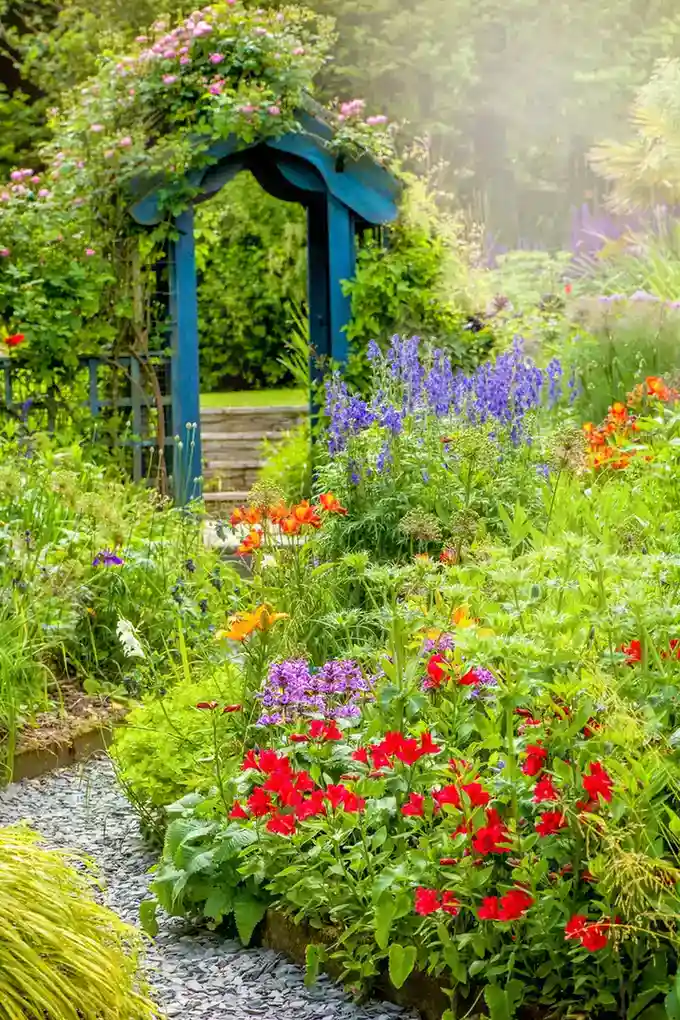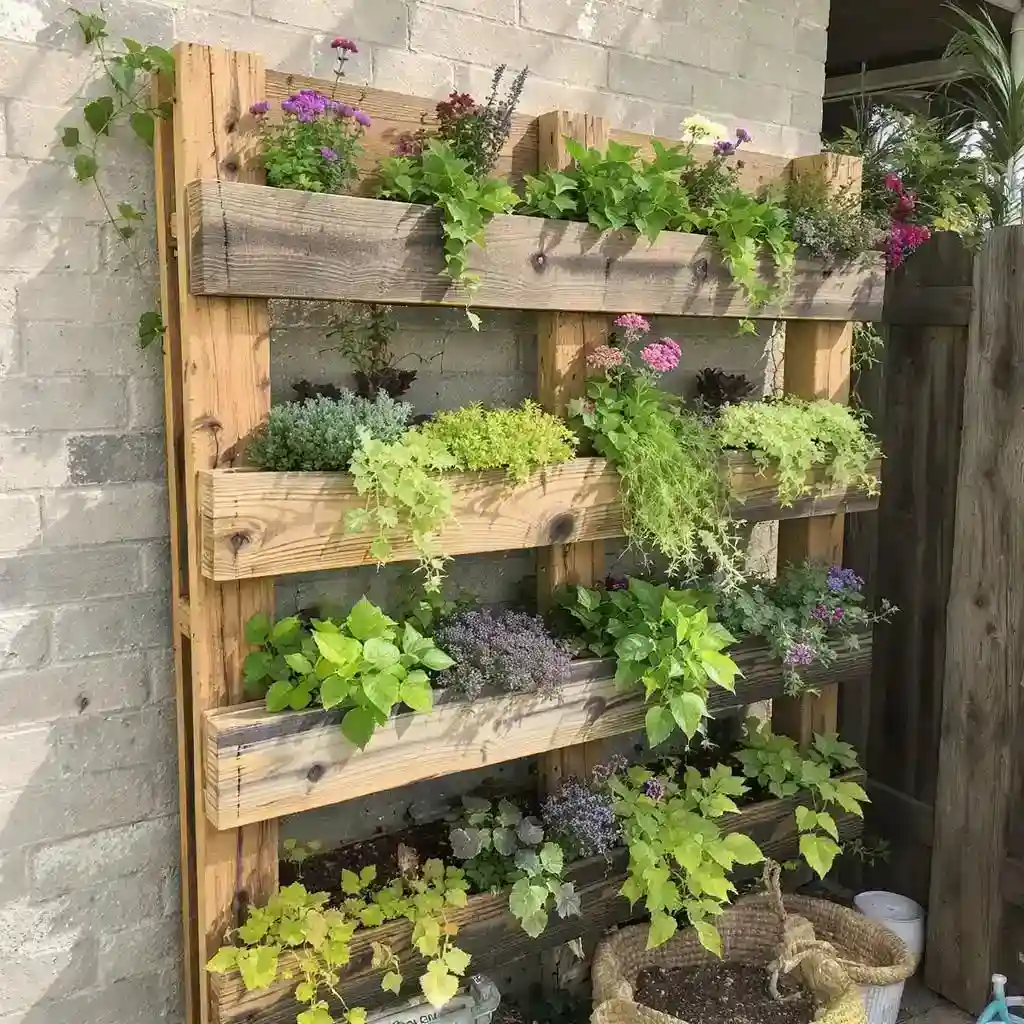Rooted in English tradition, cottage gardens are informal, lush, and romantic — a charming blend of perennials, herbs, climbing roses, and winding paths.
The best part?
You don’t need a manor or even a large backyard to create your own.
Whether you have a sprawling lawn, a cozy courtyard, or even a few containers, these 31 cottage flower garden ideas will help you bring the timeless charm of the English countryside to your home.
1. Overflowing Flower Borders

Forget neat rows. Fill your flower beds with a dense mix of tall, medium, and trailing plants to create a lush, wild look. Combine delphiniums, foxglove, daisies, and lavender, letting them spill into one another to achieve that signature overflowing style.
How to do it: Start by layering the tallest flowers in the back, mid-height blooms in the middle, and shorter plants in front. Be mindful of bloom times and light needs to ensure long-lasting interest.
What to watch out for: Overcrowding can lead to poor air circulation and disease, so allow for some breathing room between plants.
Extra tip: Mix textures and leaf colors (such as the silvery tones of lamb’s ear) to create depth and contrast.
2. Add a Climbing Rose Trellis
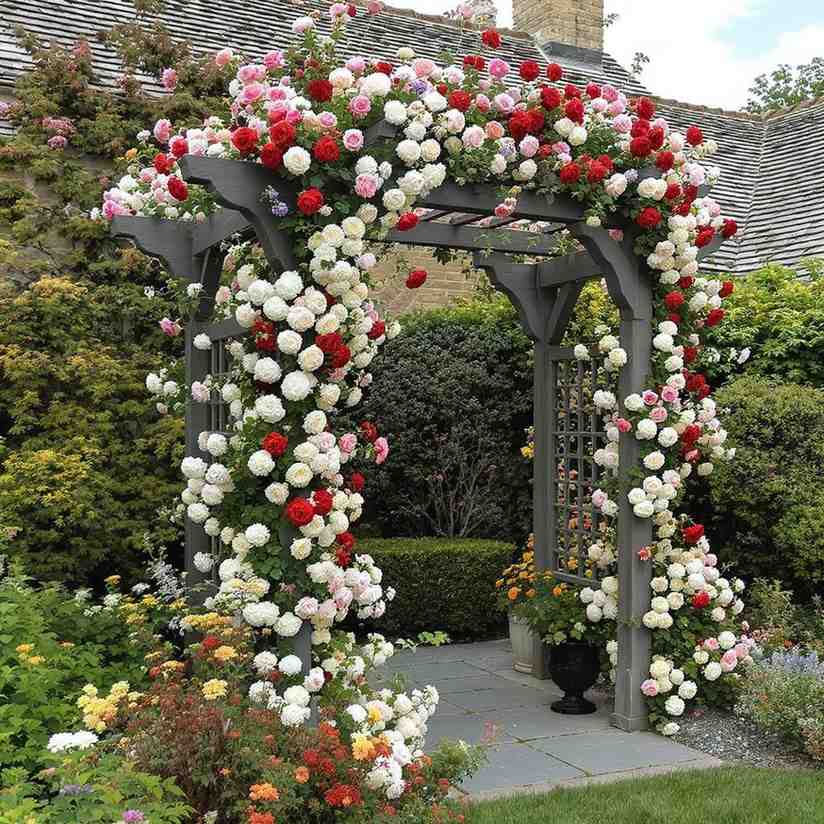
Climbing roses are iconic in cottage gardens and add height, fragrance, and color.
How to do it: Install a sturdy trellis, arbor, or obelisk. Choose varieties like ‘Eden,’ ‘Zephirine Drouhin,’ or ‘New Dawn.’ Tie the canes gently as they grow to train them up the support.
What to watch out for: Prune annually to shape and remove dead wood. Climbing roses need 6–8 hours of sun.
Extra tip: Underplant with catmint or lavender to hide bare rose bases and create a romantic combo.
3. Use a Winding Pathway
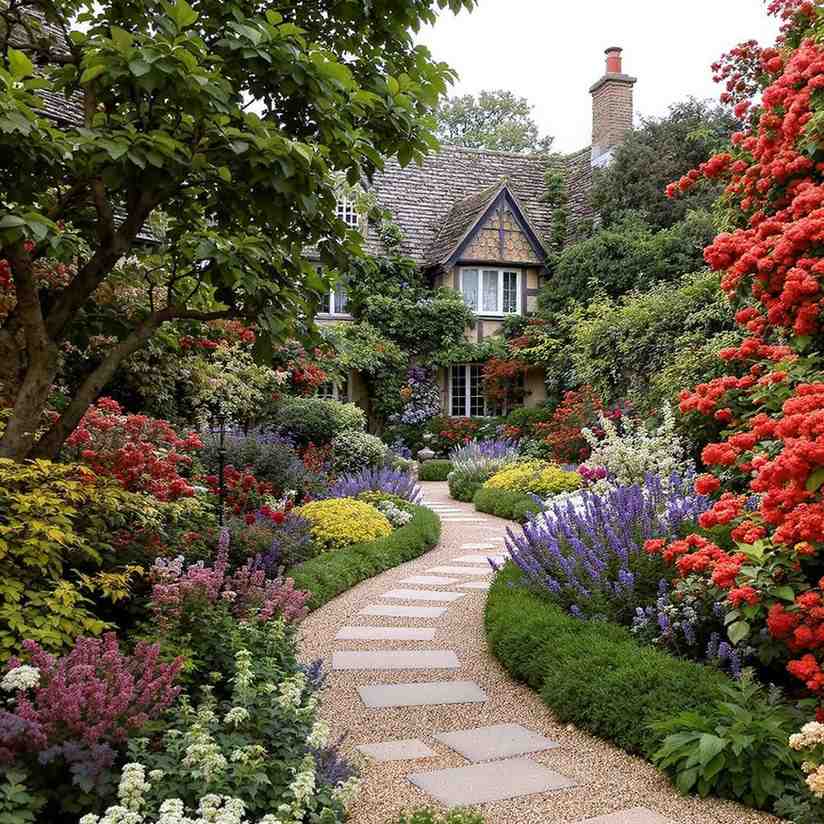
Meandering paths add enchantment and guide guests through the garden.
How to do it: Lay out a curving path using pea gravel, bricks, or stepping stones. Avoid straight lines — let the path weave naturally around beds.
What to watch out for: Make paths wide enough (at least 2 feet) for easy walking and keep them weed-free with edging or fabric beneath gravel.
Extra tip: Border paths with lavender or thyme to create aromatic walkways.
4. Mix Annuals with Perennials

Annuals provide quick color while perennials offer structure year after year.
How to do it: Combine self-seeding annuals like cosmos and zinnias with hardy perennials like coreopsis and echinacea. Use annuals to fill in bare spots and extend blooming time.
What to watch out for: Replant annuals each year unless they self-seed. Group plants with similar water/sun needs together.
Extra tip: Rotate annual types every season to refresh the garden’s look without starting from scratch.
5. Incorporate Edibles

Blend beauty and function by integrating herbs and vegetables into your flower beds. Classic choices include thyme, sage, mint, and basil, which provide both aroma and culinary use. You can also sneak in lettuce, Swiss chard, and strawberries for a delicious touch.
How to do it: Place taller edibles like tomatoes at the back, and be sure to space plants according to their mature size to prevent overcrowding. Mulch around edibles to retain moisture and prevent weeds.
What to watch out for: Avoid placing aggressive spreaders like mint directly into beds—use containers to keep them under control.
Extra tip: Interplanting with flowers like marigolds can deter pests naturally.
6. Add a Bench or Seating Nook

Create a quiet place to enjoy your garden with a cozy bench or chair tucked among blooms.
How to do it: Choose a weathered wood or wrought iron bench and place it under a tree, near an archway, or at the end of a winding path. Surround it with fragrant flowers like roses, lavender, and sweet peas.
What to watch out for: Ensure seating is on stable, dry ground and won’t get overgrown too quickly.
Extra tip: Add a small table or stool nearby for a cup of tea or a gardening book.
7. Let Flowers Self-Seed
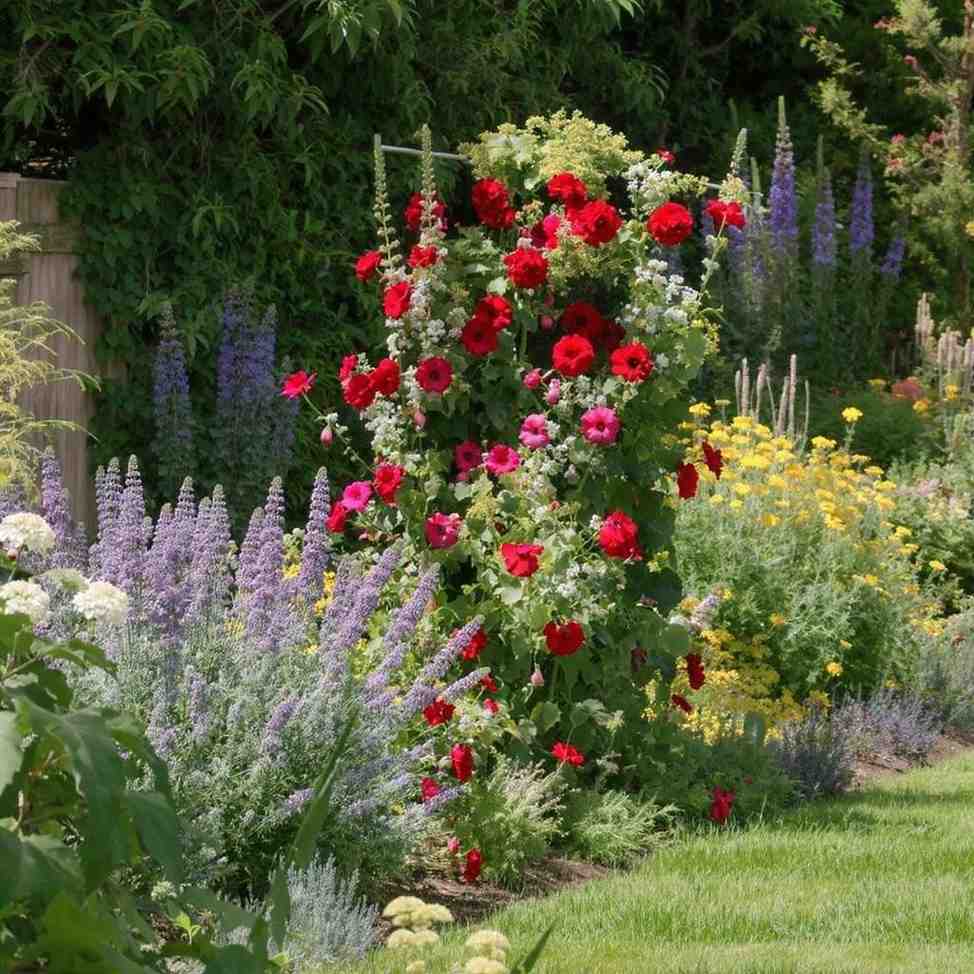
A hallmark of cottage gardens is their unplanned beauty — and self-seeding flowers help create that. Choose varieties like love-in-a-mist, hollyhocks, calendula, and poppies.
How to do it: After blooming, allow seed heads to dry naturally and fall to the soil. Avoid deadheading these plants until they’ve dropped their seeds.
What to watch out for: Self-seeders can take over if not thinned occasionally. In early spring, gently guide seedlings by removing excess growth.
Extra tip: Mark the locations of desirable self-seeding plants so you can identify them during weeding.
8. Install a Weathered Fence
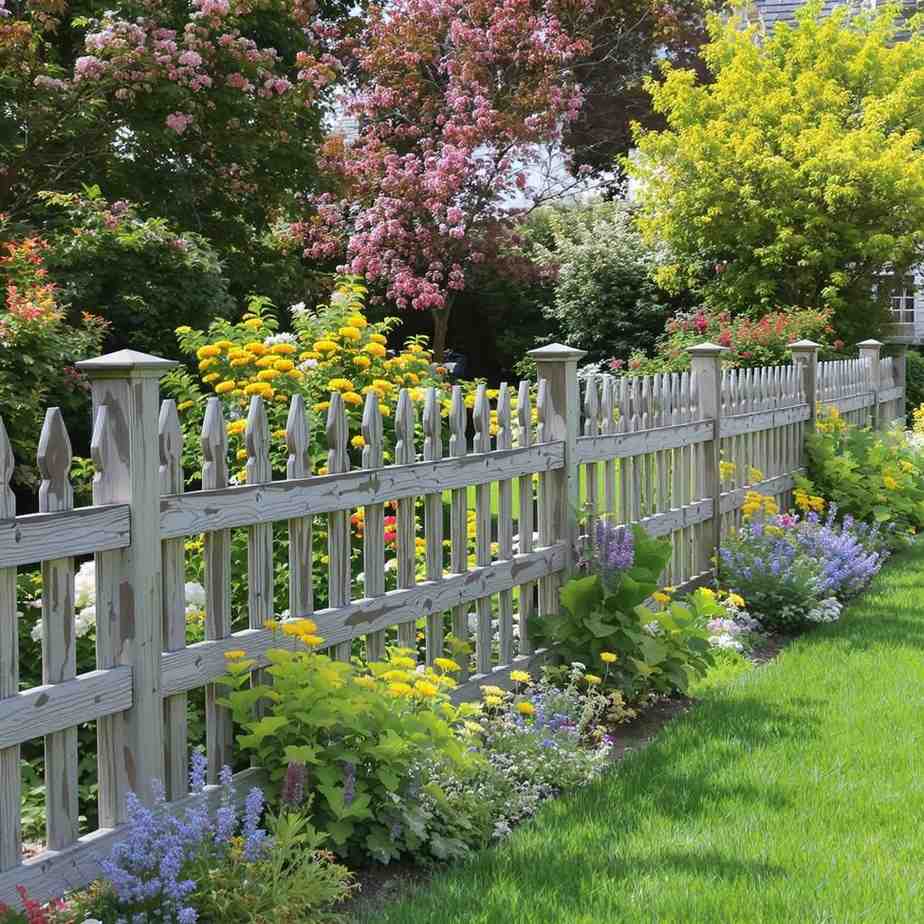
A picket or post-and-rail fence brings instant English cottage charm and helps define your garden space.
How to do it: Use reclaimed wood or white-painted fencing to surround your beds. You can install just a section for decor or create a full border.
What to watch out for: Choose rot-resistant wood or treat it properly to extend its life outdoors.
Extra tip: Let flowering vines like morning glories or climbing nasturtiums grow along the fence.
9. Create a Wildflower Corner
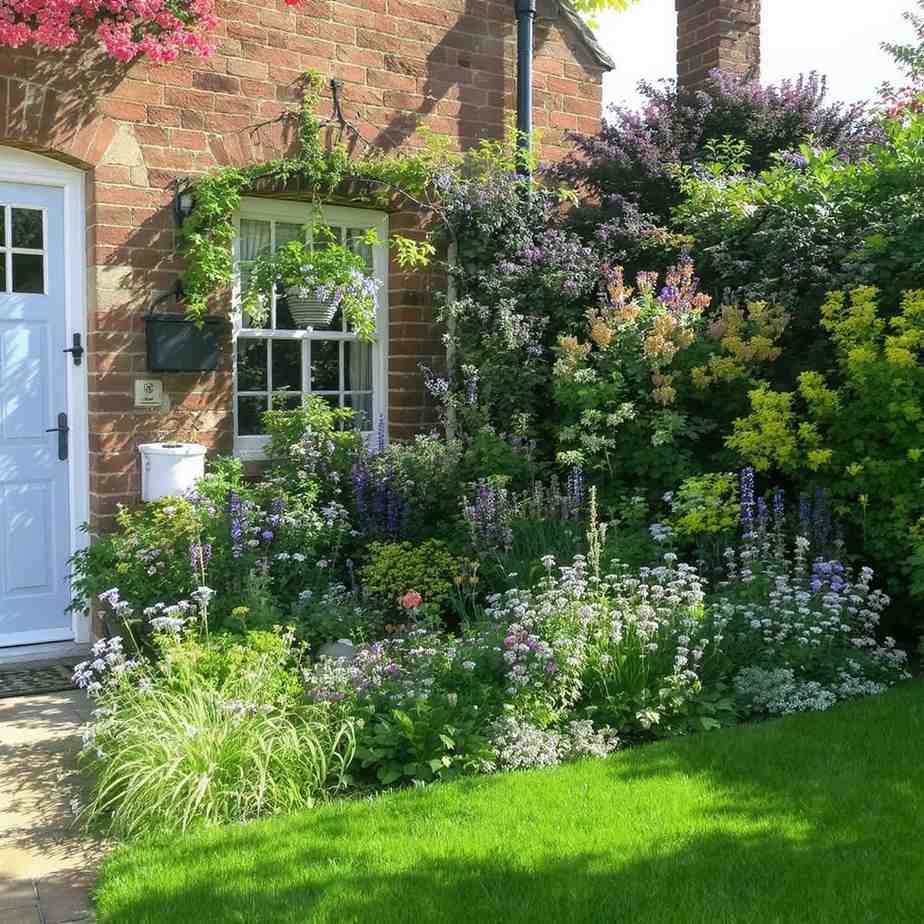
Wildflowers lend a meadow-like feel and support biodiversity.
How to do it: Choose a sunny, low-traffic area and scatter a wildflower mix suited to your climate. Rake the soil lightly and water consistently until germination.
What to watch out for: Some wildflowers may reseed aggressively, so be prepared to edit the space each season.
Extra tip: Include native species for a low-maintenance, eco-friendly option.
10. Grow Lavender Along Paths

Lavender brings fragrance, color, and pollinators to your garden.
How to do it: Plant it in full sun along walkways, walls, or borders. Choose compact varieties like ‘Munstead’ for tighter spaces.
What to watch out for: Ensure well-drained soil — lavender dislikes soggy roots.
Extra tip: Trim it lightly after flowering to keep a tidy shape and encourage reblooming.
11. Frame the Front Door with Flowers

Nothing says “cottage charm” like blooms framing your home’s entry.
How to do it: Use large pots, climbing roses, or flower beds flanking your doorway. Layer with upright and trailing varieties for depth.
What to watch out for: Keep taller plants trimmed so they don’t block access or windows.
Extra tip: Use repeating colors that coordinate with your home’s exterior.
12. Add Hanging Baskets

Hanging baskets create vertical interest and allow gardening even in small spaces.
How to do it: Use brackets on fences or house walls to hang baskets filled with trailing plants like petunias, lobelia, and ivy geraniums.
What to watch out for: Hanging baskets dry out quickly — check daily in hot weather.
Extra tip: Mix upright and cascading plants for a balanced look.
13. Grow a Mini Meadow in Containers
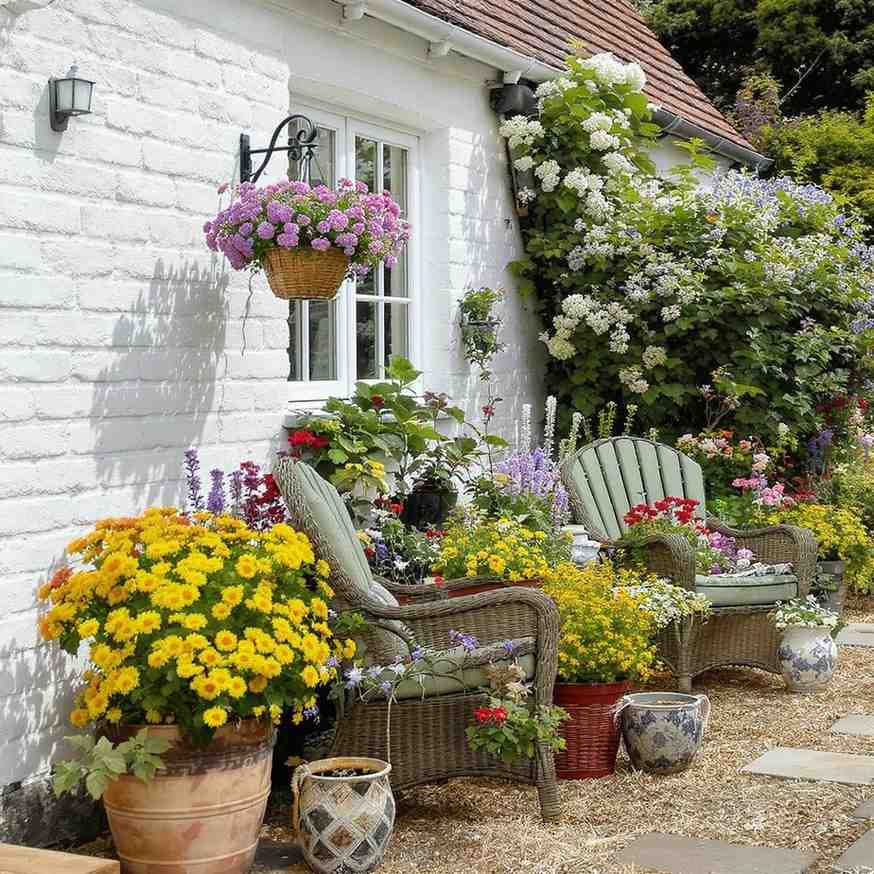
You don’t need a yard to enjoy the cottage garden look — container-grown mini meadows are a great option.
How to do it: Use large pots and fill them with soil rich in compost. Sow mixes of meadow seeds — like cornflowers, calendula, bachelor’s buttons, and poppies — directly into the pots.
What to watch out for: Thin seedlings as they grow so plants have space to develop.
Extra tip: Group multiple containers together for a full effect and to attract pollinators.
14. Grow Hollyhocks Against Walls
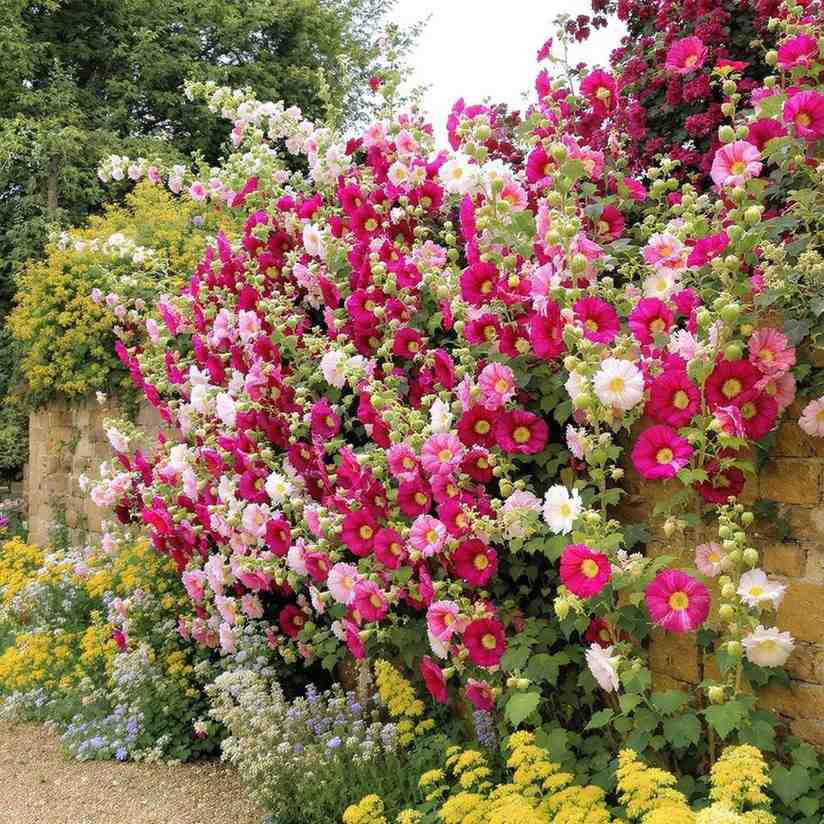
Hollyhocks add a dramatic vertical element to any cottage garden. Plant them along sunny walls or fences where they can reach their full height, often over six feet.
How to do it: Prepare well-drained soil and give them full sun. Water consistently and use a tall stake to support each plant if needed.
What to watch out for: Rust is a common fungal disease in hollyhocks. Remove infected leaves and provide good airflow by spacing them apart.
Extra tip: Since hollyhocks are biennials, plant new ones every year to maintain continuous blooms.
15. Add an Old Gate or Arch
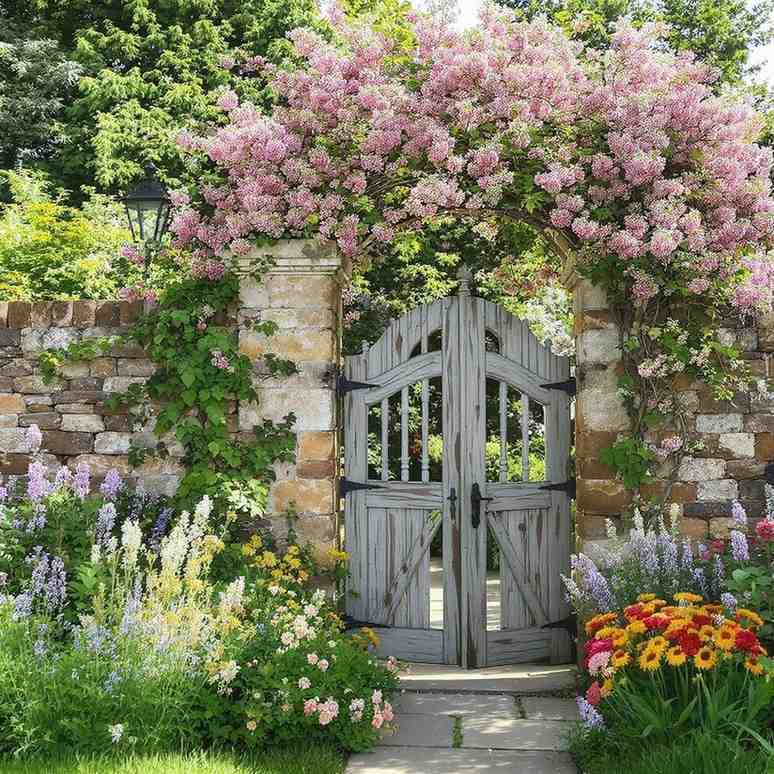
Vintage gates and arched structures offer instant charm and create visual transitions in the garden. Whether they’re functional or purely decorative, they add a romantic entry point to your space.
How to do it: Repurpose an old iron gate or wooden arbor and install it at the start of a path or between beds. Let climbing roses or clematis grow over the structure.
What to watch out for: Ensure the structure is securely anchored to withstand wind and weight from climbing plants.
Extra tip: Paint or distress your gate for a weathered, authentic look that blends with the garden’s rustic vibe.
16. Encourage Pollinators

Pollinators like bees, butterflies, and hummingbirds are essential for a thriving cottage garden.
How to do it: Plant nectar-rich flowers such as bee balm, echinacea, lavender, salvia, and borage. Choose a variety of shapes and colors to attract different species.
What to watch out for: Avoid pesticides and herbicides, which can harm beneficial insects.
Extra tip: Add a shallow dish of water with pebbles for butterflies to perch on and drink safely.
17. Create Layers with Height

A layered garden looks full and dynamic. Height variation adds interest and ensures each plant gets the spotlight.
How to do it: Use tall plants like foxglove and delphinium at the back, medium-height plants like daisies in the middle, and low growers like creeping thyme or violas at the front.
What to watch out for: Don’t shade sun-loving plants by placing them behind taller ones.
Extra tip: Use stakes or cages discreetly to keep taller plants from flopping over.
18. Tuck in Garden Statues
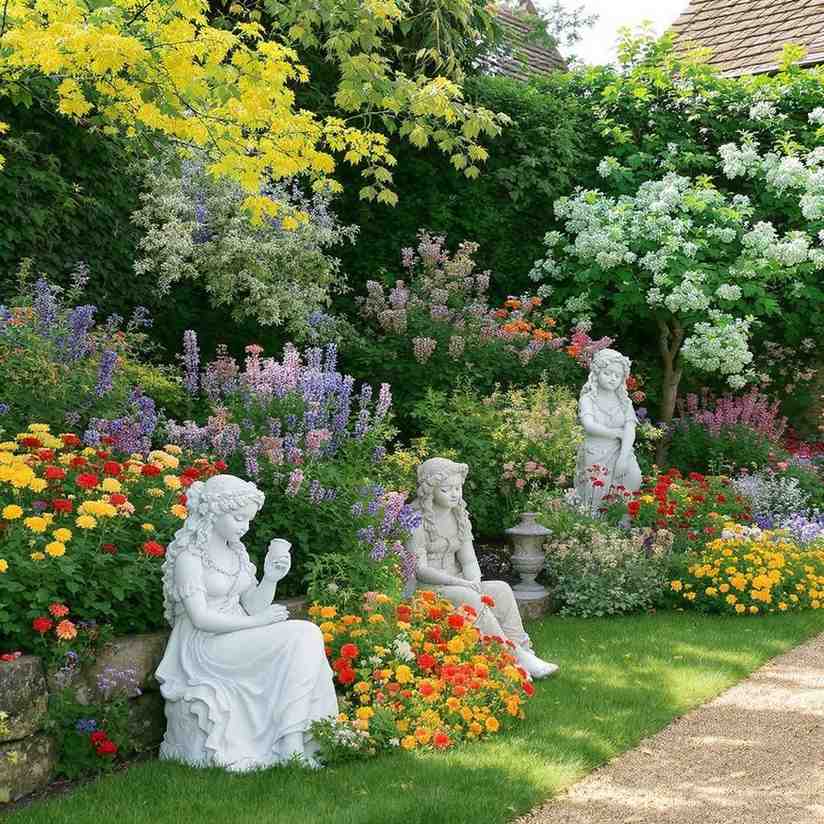
Garden ornaments enhance the storybook atmosphere of a cottage garden.
How to do it: Place small statues of birds, cherubs, or animals among flower beds where they peek through blooms.
What to watch out for: Avoid cluttering—space statues thoughtfully so they don’t overwhelm the plants.
Extra tip: Choose weather-resistant materials like stone or resin to ensure durability.
19. Use Weathered Garden Tools as Decor
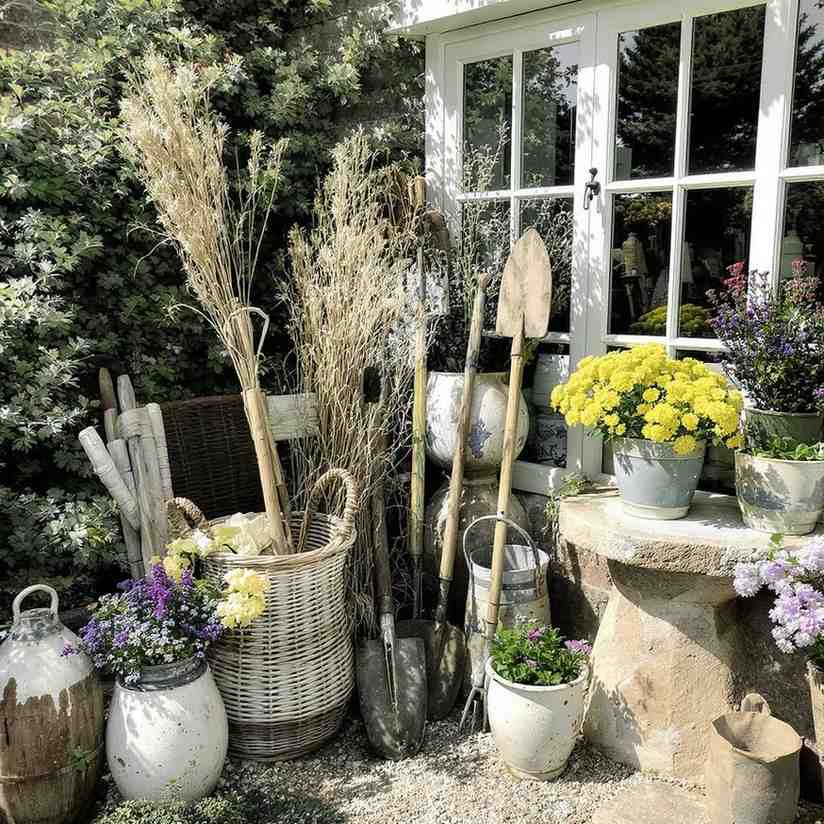
Old gardening tools can add a nostalgic, whimsical touch.
How to do it: Hang antique spades or rakes on fences or lean them against trees and sheds.
What to watch out for: Secure them well so they don’t fall or become hazards.
Extra tip: Group tools together with hanging baskets or flower pots to create a rustic vignette.
20. Grow Clematis in Containers
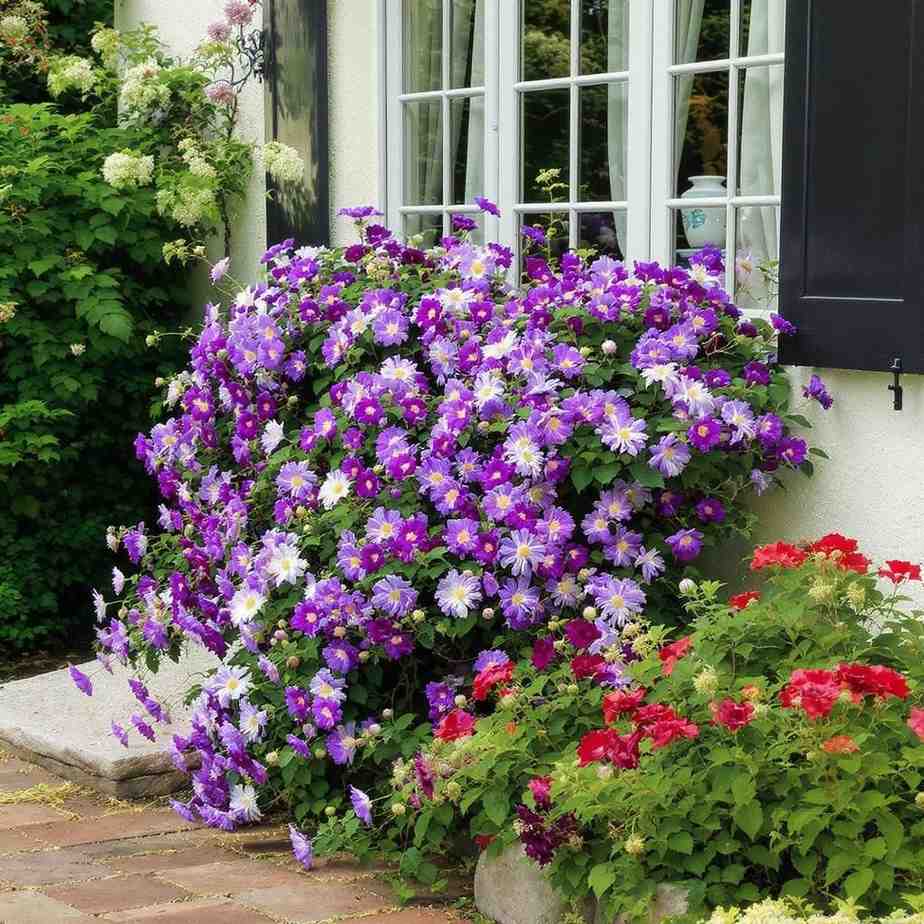
Clematis offers dramatic flowers and works well in small spaces.
How to do it: Use a large container with quality soil and a tall support like an obelisk. Water regularly and feed with a balanced fertilizer.
What to watch out for: Clematis likes cool roots—shade the base with stones or low plants.
Extra tip: Prune according to the clematis group to keep it healthy and blooming.
21. Build a Potting Table Display
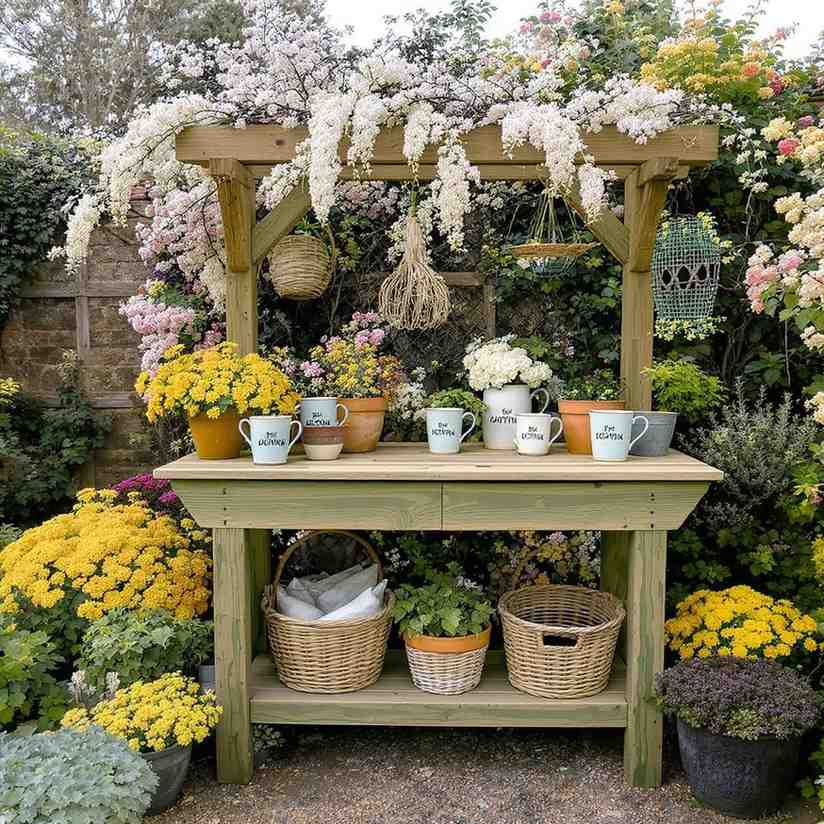
A potting table isn’t just functional—it adds rustic charm.
How to do it: Use reclaimed wood or an old table and place it near your garden beds. Add potted herbs, vintage seed packets, and a few hand tools.
What to watch out for: Protect the surface with a sealant if exposed to weather.
Extra tip: Mount hooks or shelves above the table to store tools and display garden trinkets.
22. Add Cobblestone or Brick Edging

Hardscaping defines borders and gives your garden an aged feel.
How to do it: Line flower beds with antique bricks or irregular cobblestones. Bury part of each piece for stability.
What to watch out for: Ensure proper drainage around edging to avoid pooling.
Extra tip: Let moss and low groundcovers like creeping Jenny grow between cracks for a softened effect.
23. Go Heavy on Greenery

Foliage provides contrast and rest for the eyes amid all the blooms.
How to do it: Mix in plants like ferns, hostas, and lamb’s ear. Their varied leaf textures and colors add layers of interest.
What to watch out for: Some leafy plants need shade—plan placement accordingly.
Extra tip: Use greenery to fill gaps after early bloomers fade.
24. Let Nature Take Over
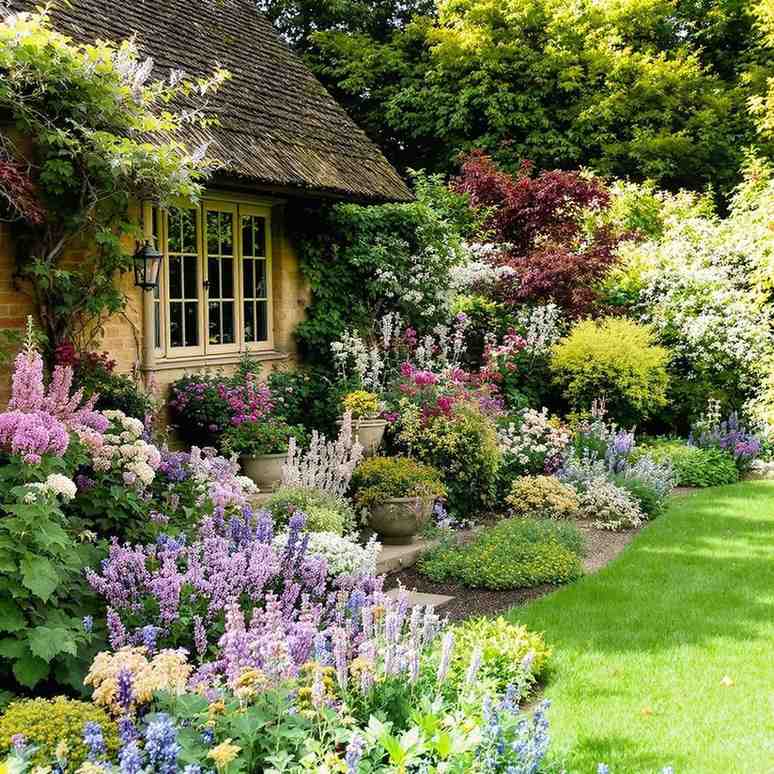
Cottage gardens thrive on a bit of wildness.
How to do it: Skip trimming and mowing in certain areas. Let daisies, clover, or yarrow grow freely and self-spread.
What to watch out for: Balance is key—set boundaries to avoid a messy appearance.
Extra tip: Use informal pathways to separate wild patches from neater zones.
25. Add a Bird Bath or Feeder
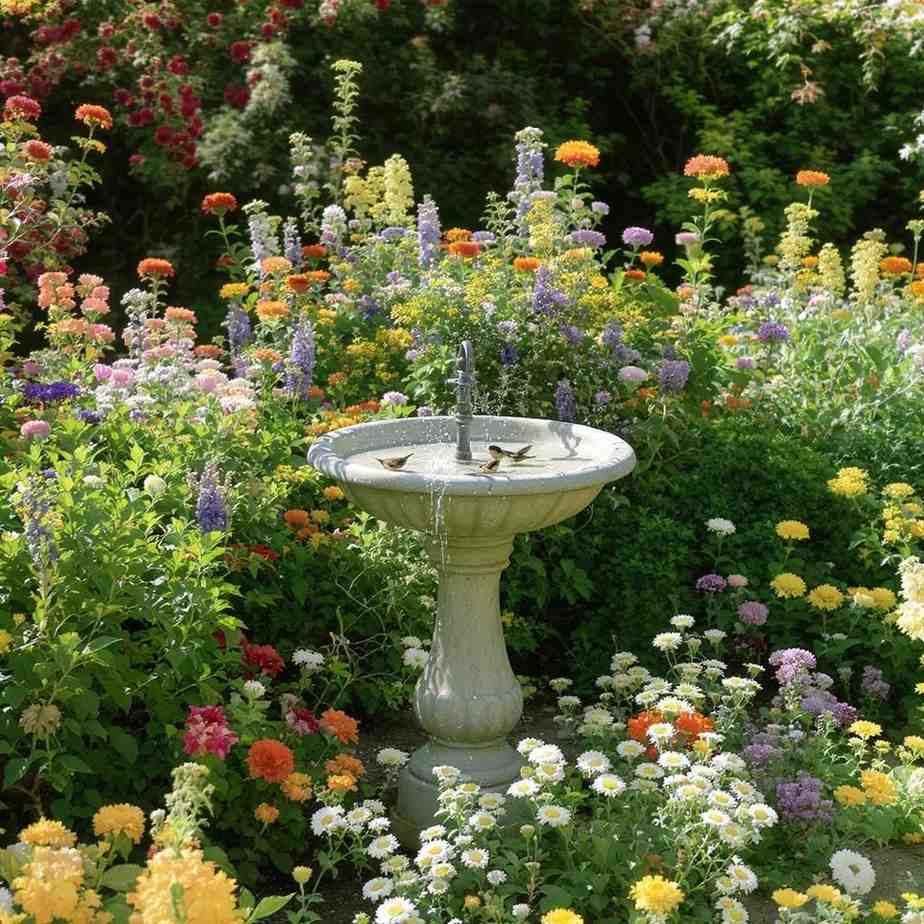
Wildlife makes a garden feel alive.
How to do it: Place a bird bath on a pedestal or add hanging feeders near flowering plants.
What to watch out for: Clean water sources regularly to avoid algae and bacteria.
Extra tip: Use native plants nearby to give birds food and shelter.
26. Choose Cottage-Style Color Combos

Color sets the mood of your garden.
How to do it: Stick to soft, romantic colors like pinks, lavenders, whites, and buttery yellows. Repeat colors in clusters for impact.
What to watch out for: Too many bold, clashing colors can feel chaotic.
Extra tip: Accent pastel blooms with silvery foliage for a calming palette.
27. Add Arched Windows or Doors

Architectural salvage creates a magical scene.
How to do it: Mount an old arched window frame on a fence or nestle it among blooms to create a “secret garden” illusion.
What to watch out for: Secure items so they won’t tip or warp in weather.
Extra tip: Train vines to grow around and through the window frame.
28. Grow Sweet Peas on a Trellis
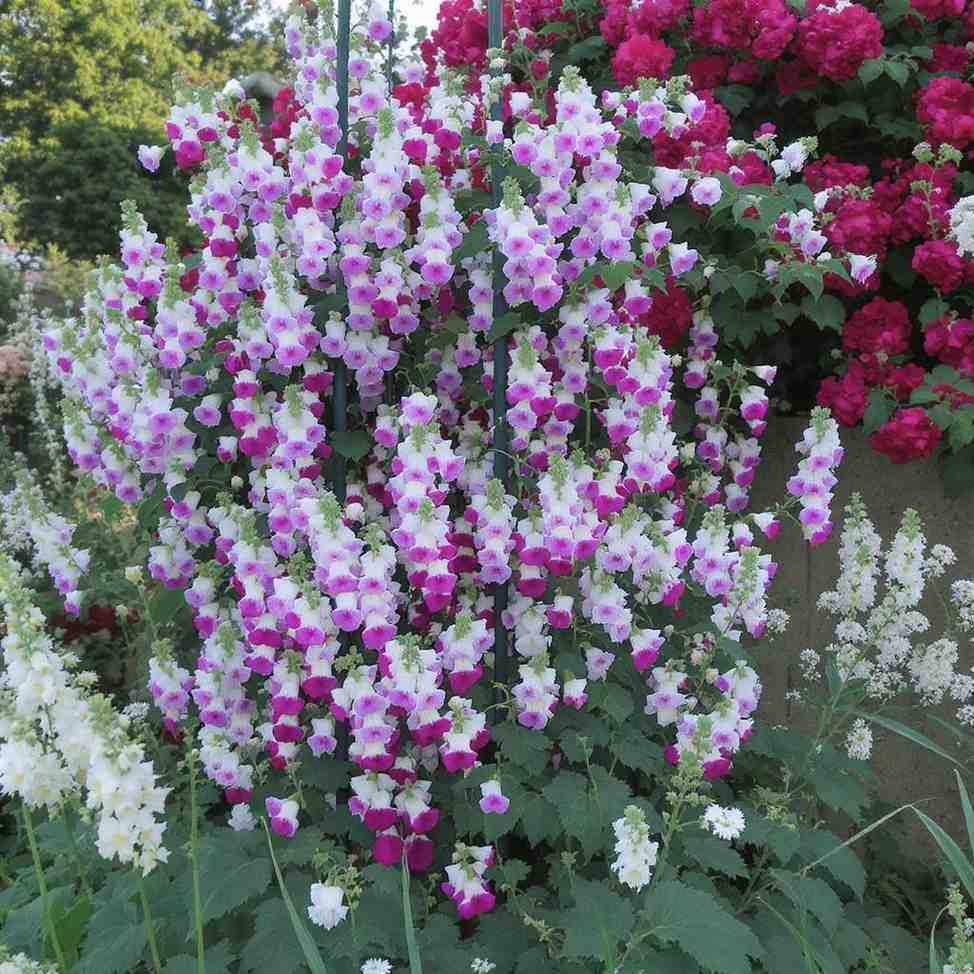
Few flowers capture cottage charm like sweet peas.
How to do it: Sow seeds in cool weather and provide a trellis or teepee for climbing. Sweet peas thrive in rich, moist soil.
What to watch out for: They dislike hot weather, so plant early or use afternoon shade.
Extra tip: Pick blooms regularly to encourage more flowers.
29. Use Gravel Between Beds
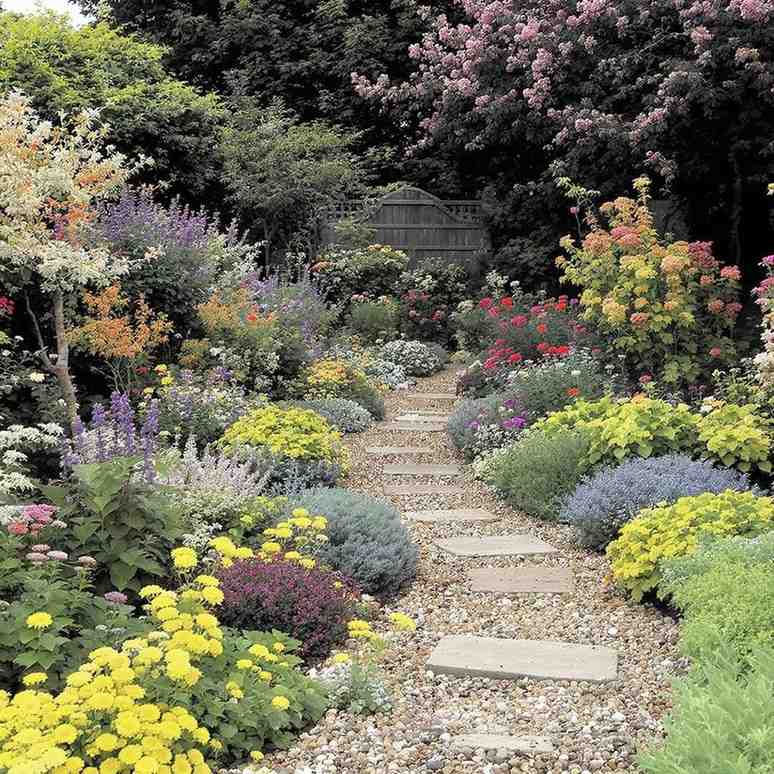
Gravel adds structure and drainage between planting zones.
How to do it: Lay landscape fabric first to reduce weeds, then pour pea gravel or crushed stone paths.
What to watch out for: Choose gravel with smooth edges to make walking barefoot more comfortable.
Extra tip: Let thyme or chamomile creep into the path edges for a fragrant touch.
30. Mix in Rustic Garden Signs

Whimsical or handmade signs add personality.
How to do it: Use chalkboard, slate, or wood to create labels or quotes. Place them near key plants or tucked into corners.
What to watch out for: Weatherproof wooden signs with outdoor sealant to extend their life.
Extra tip: Use poetic or vintage-style fonts for an authentic feel.
31. Create a Year-Round Bloom Plan

To keep your cottage garden looking magical throughout the year, choose a succession of bloomers for every season.
How to do it: Start with early bloomers like snowdrops, crocus, and daffodils. Follow up with spring flowers like tulips, irises, and foxgloves. For summer, use coneflowers, black-eyed Susans, and roses. Finish the year with asters, sedum, and ornamental grasses.
What to watch out for: Don’t forget to leave room for late-season bloomers when planting spring varieties.
Extra tip: Keep a bloom calendar or journal to track flowering times and make adjustments each year.
Final Thoughts
Cottage gardens aren’t about precision — they’re about abundance, texture, and storytelling. With their unstructured beauty and layers of color, they feel like a living fairytale. Whether you incorporate just a few of these ideas or build your entire garden around them, you’re creating a peaceful, vibrant space that reflects both nature and nostalgia.
So roll up your sleeves, pick up some seeds, and start building your own English cottage dream — one flower at a time.
I’m Anastasios Moulios, co-founder of DIY Cozy Living. I enjoy finding creative, practical ways to make small spaces feel warm, stylish, and lived-in — whether it’s a camper, a backyard, or a cozy room inside. I started this blog with Katerina to share real ideas that make home feel a little more personal and a lot more comfortable.

